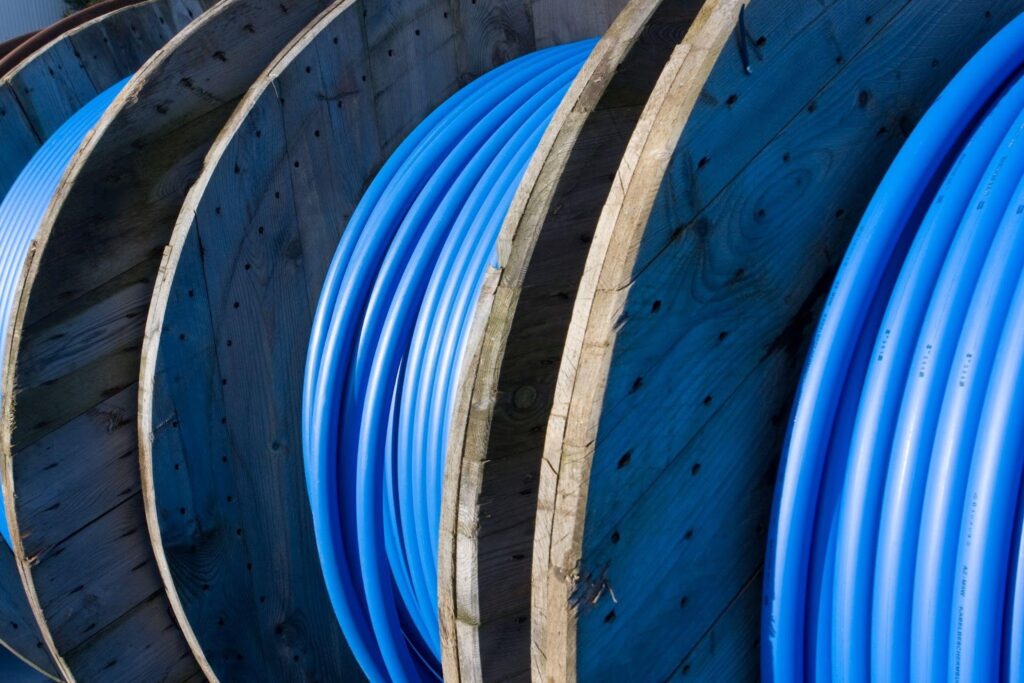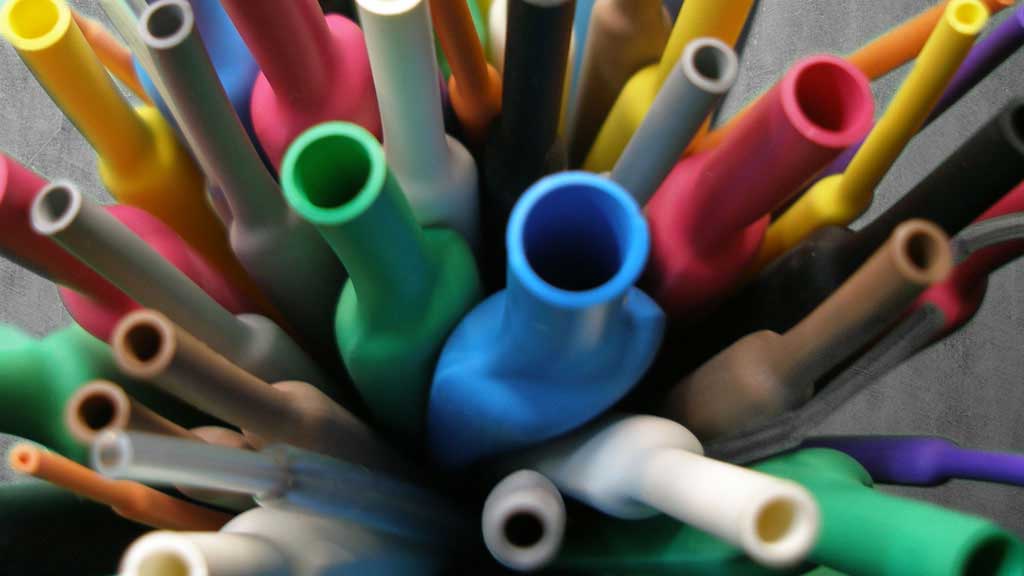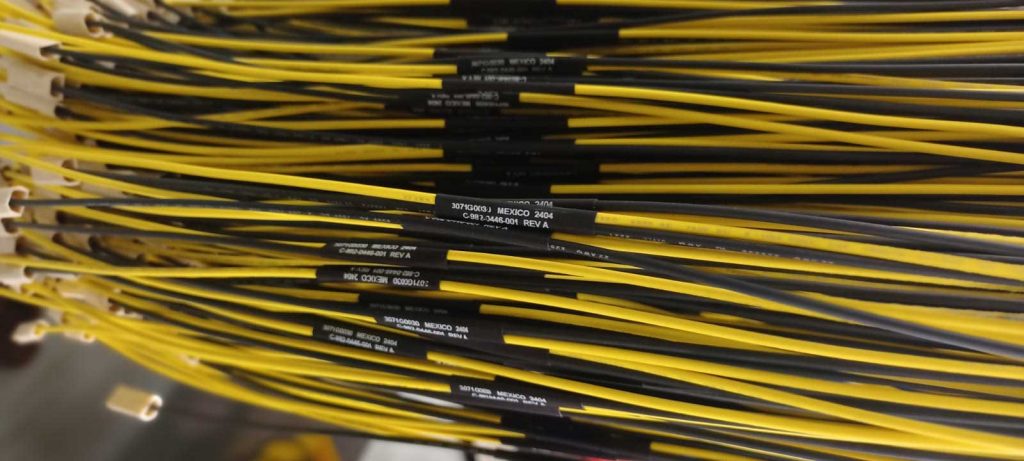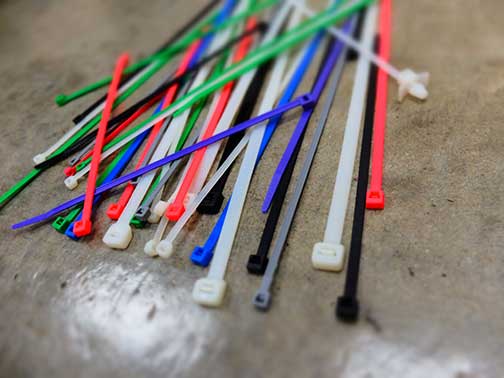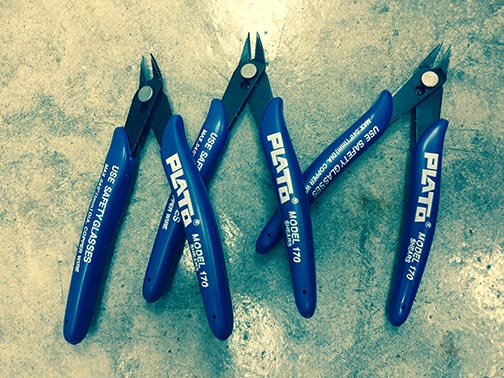So what is PVC tubing and how does this material play a role in critical applications?
What is Polyvinyl Chloride?
Polyvinyl chloride is one of the most ubiquitous and widely-used thermoplastic polymers across the world. What is a thermoplastic polymer? Let’s do a quick overview.
The chemical makeup of PVC is what makes it so versatile and usable in various applications. A polymer is a material composed of many chains of monomers. A monomer refers to the basic units of polymers, which make up proteins and are therefore an important unit of unique chemicals. These monomers can be synthetic or natural. Examples of monomers include glucose, vinyl chloride, ethylene, and amino acids.
A thermoplastic polymer is made up of various monomers that are bound together through electrical bonds. The nature of the bonds gives the polymers their unique properties. One of these properties is that it softens when heated. As such, it can be used as a versatile material that is molded into various shapes. Thermoplastic polymers are strong and have high tensile strength.
How is Polyvinyl Chloride Made?
Manufacturing polyvinyl chloride is relatively simple. First, manufacturers combine chlorine and ethylene to form the compound ethylene dichloride. That compound is then heated. This process then creates a chloride monomer. Once that is done, the monomers are smashed together to create the polymerization and form polyvinyl chloride polymer.
What makes PVC a unique material for piping and cable management protection?
PVC tubing is effective in providing insulation and protection for a variety of wire harness assemblies. It is resistant to heat and moisture, which means it can be used in different environments without compromising the cable contents.
General properties of polyvinyl chloride include:
- High density: PVC has a high density as compared with other plastics.
- Low cost: Manufacturing PVC is not very expensive, which makes it an accessible material for many important applications. The cost to produce the material and its high performance make it a good material to invest in.
- Good durability: PVC has a long shelf life and can last a long time, even in tough conditions. The material is lightweight and very flexible.
- Strength: Tensile strength means that it takes a lot of force to break the material or stretch it out. This makes it a reliable material.
- Effective electric insulator: Its chemical makeup makes PVC effective for electrical insulation because it doesn’t conduct electricity.
- Fire-resistant: Another reason why PVC can be used in harsh conditions, is its resistance to fire. Because of its chlorine and low oxygen makeup, it can resist fire very effectively.
Thermoplastic Polymers as Common Cable Insulation and Other Applications
Various types of thermoplastic polymers serve several functions in cable applications, protections, and tubing. High-pressure polyethylene is used as a capsule material to protect rigid objects like electrical equipment. Another thermoplastic polymer is polyamide, which is often used for the insulation of electrical cables. Then, of course, is one of the most widely used polymers: polyvinyl chloride.
What Applications is PVC Tubing Used For?
Because of the versatility of the material, PVC is used in a variety of applications across many industries and sectors. This material is a top choice to protect, organize, and route cables in many different settings that require a material that is abrasion-resistant, heat-resistant, and flexible. Protecting electrical infrastructure, after all, is a top priority for companies and businesses that have them as part of their operation.
PVC tubing can be produced in a shrink or non-shrink tubing variety. This PVC tubing provides insulation and protection for various cable assemblies including lead wires, wire harness assemblies, joints, and other electrical components and equipment.
Applications that use PVC non-shrink tubing:
- Wiring and Cable management
- Siding and window frames
- Plumbing piping
- Healthcare industries
- Automotive industries
Find Quality PVC Tubing for Your Cable Management Needs
Here, at HST Cable Management Products, we specialize in protecting valuable electrical wiring, cable assemblies, and other critical electrical equipment. The quality of non-shrink tubing can have an effect on the safety and performance of your cables and electrical wires.
These wires likely support the necessary infrastructure for your business or operation. Want to learn more about high-quality PVC non-shrink or shrink tubing? Call HST Cable Management Products today.

